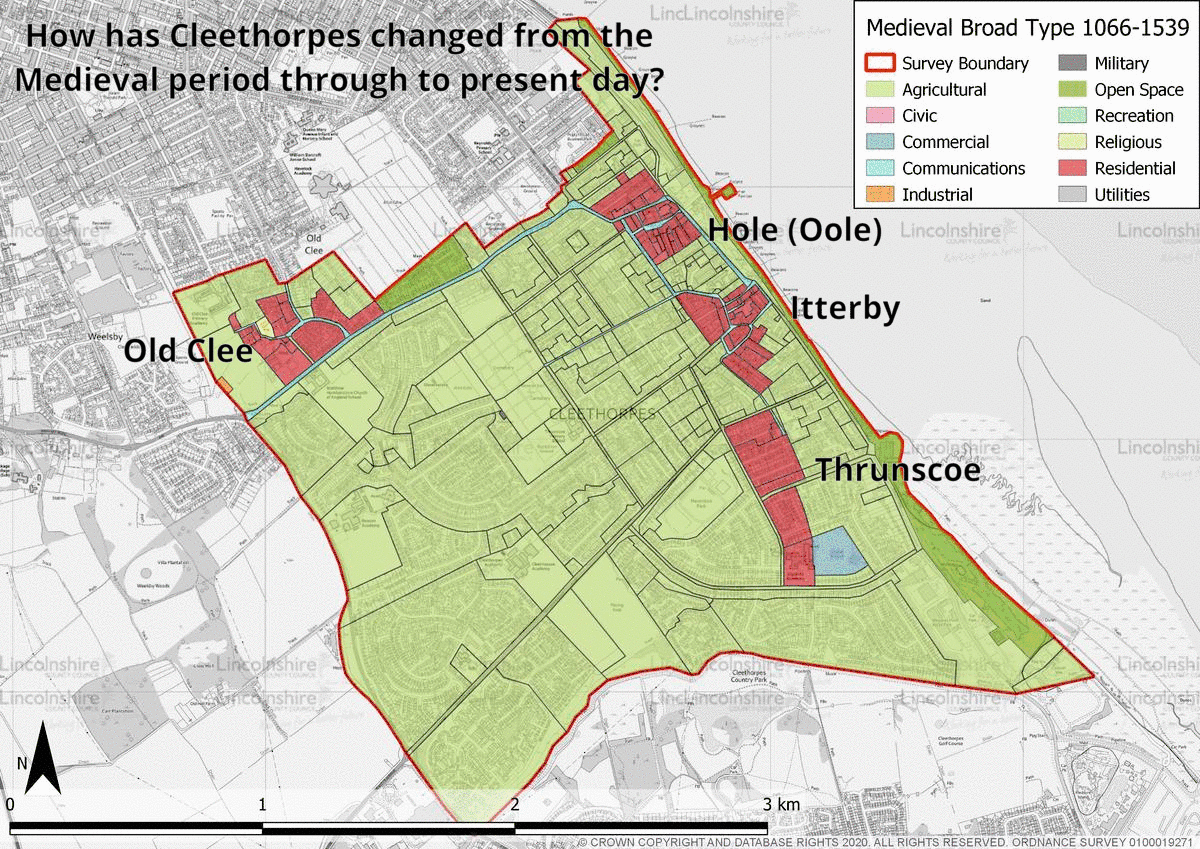
CLEETHORPES
Cleethorpes is a seaside resort on the estuary of the Humber in North East Lincolnshire with a population of nearly 40,000 in 2011.
It has been permanently occupied since the 6th century, with fishing as its original industry, then developing into a resort in the 19th century. The town lies on the Greenwich meridian and its average annual rainfall is amongst the lowest in the British Isles.


Cleethorpes Sea Front and Pier
The name Cleethorpes is thought to come from joining the words clee, an old word for clay, and thorpes, an Old English/Old Norse word for villages, and is of comparatively modern origin. Before becoming a unified town, Cleethorpes was made up of three small villages, or "thorpes": Itterby, Oole and Thrunscoe, which were part of a wider parish called Clee (centred on Old Clee).
Whilst there are neolithic and Bronze Age remains in the area, permanent occupation appears to date from the 6th century, when the Danes arrived, with substantial communities appearing only in the 9th century.

Ross Castle, Cleethorpes

Remembrance Gate, Cleethorpes

Cleethorpes Sea Front
The manor of Itterby was purchased in 1616 by the trustees of Peter Blundell's charity for the benefit of scholars and fellows at Sidney Sussex College, Cambridge from Blundell's School, Tiverton. This is reflected in many of the street and park names in the area.
Cleethorpes developed as a fishing village. By the time of the 1801 census the population was 284. The 1820s saw the first developments of Cleethorpes as a health holiday resort, with sea-bathing and the taking of medicinal waters becoming fashionable. By 1831 the population had increased to 497.
In 1842 the Cleethorpes Enclosure Bill was enacted. 2,100 acres (8.5 km2) of land were divided among land owners and eight new roads developed. In 1848 Cleethorpes was described as "...much resorted to as a bathing-place, for which it is highly eligible; the air is pure, the scenery good and besides a few lodging-houses and smaller inns, there is a large hotel, built some years since, on an eminence embracing extensive views of the sea, the Humber, and the Yorkshire coast. Many of the population are employed in the oyster-fisheries."
The resort expanded following the linking of the town by railway with industrial towns in Yorkshire. Cleethorpes Pier opened in 1873 and the promenade in 1885. Cleethorpes with Thrunscoe was created as a Local Board of Health District in 1873, and under the Local Government Act of 1894 it became an urban district.
In 1916 the urban district was renamed Cleethorpes, and in 1922 and 1927 the town's boundaries were extended to include part of Humberston (as far as North Sea Lane) and the Beacon Hill area of Weelsby parish. In 1936 Cleethorpes was granted a charter of incorporation to become a municipal borough.
Cleethorpes successfully resisted attempts by Grimsby to absorb it and in 1974 it became the Borough of Cleethorpes within the new county of Humberside. However, when Humberside County Council was abolished in 1996, Cleethorpes Borough Council was joined with Grimsby Borough Council as the unitary authority of North East Lincolnshire. In 2009 North East Lincolnshire Council agreed to market the towns of Grimsby, Immingham and Cleethorpes, under the 'Greater Grimsby' banner.
Local residents from Lincolnshire and the Humber area affectionately refer to Cleethorpes as Meggies; the two largest resorts on the Lincolnshire coast are known by their nicknames 'Meggies' (Cleethorpes) and 'Skeggy' (Skegness). Cleethorpes can also be known as "down beach".
